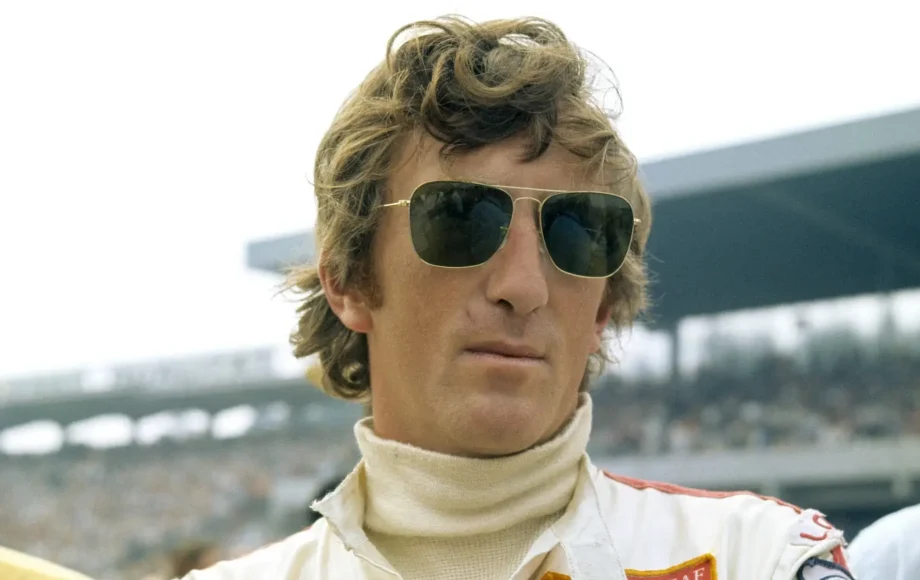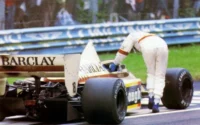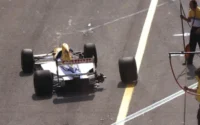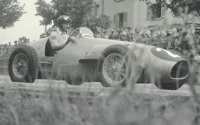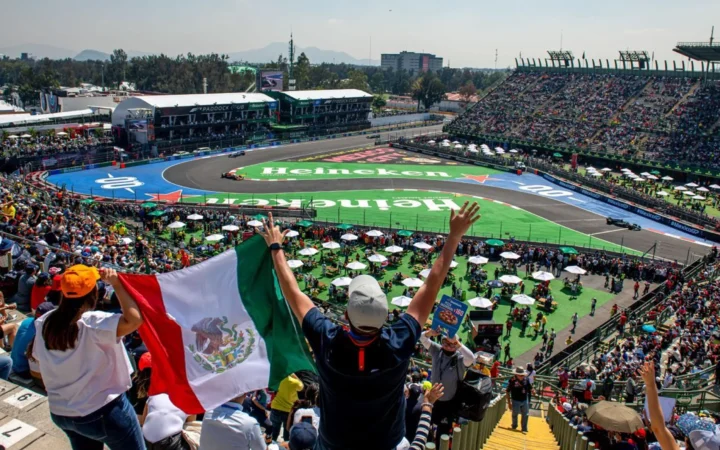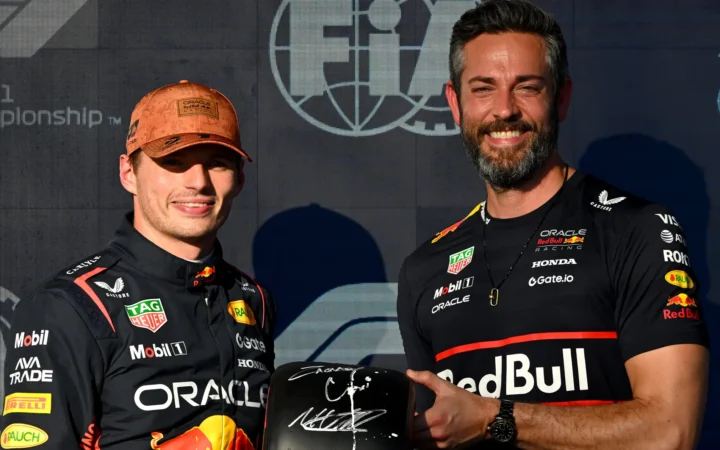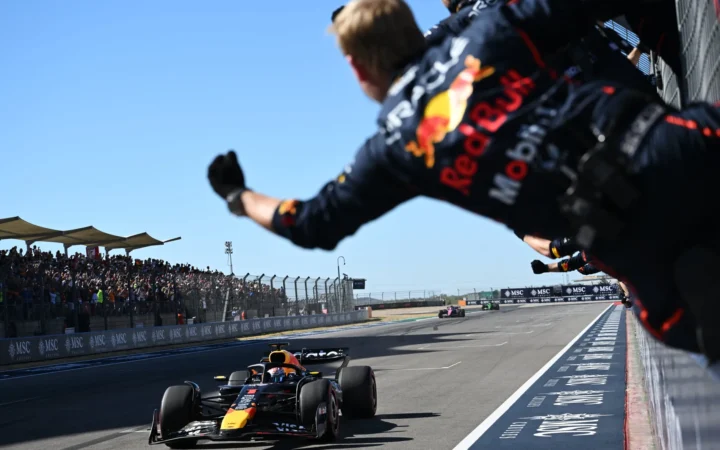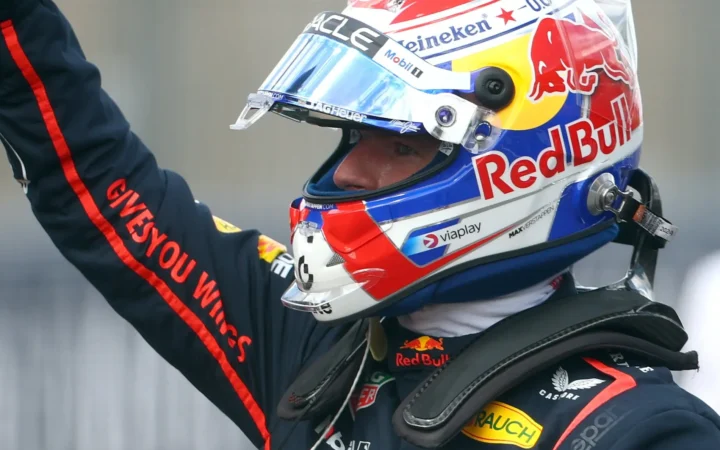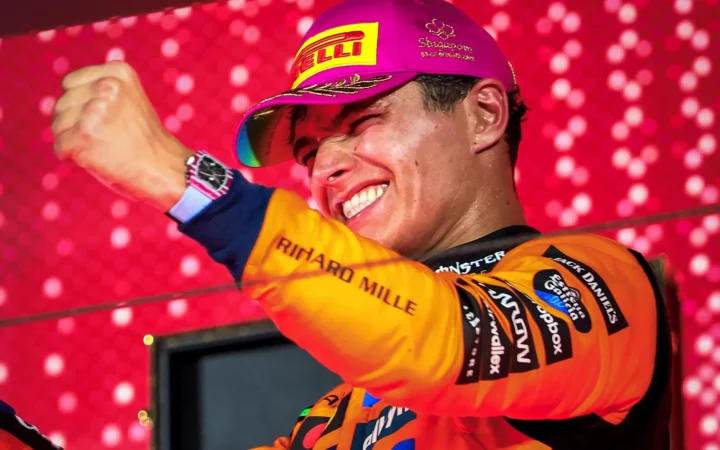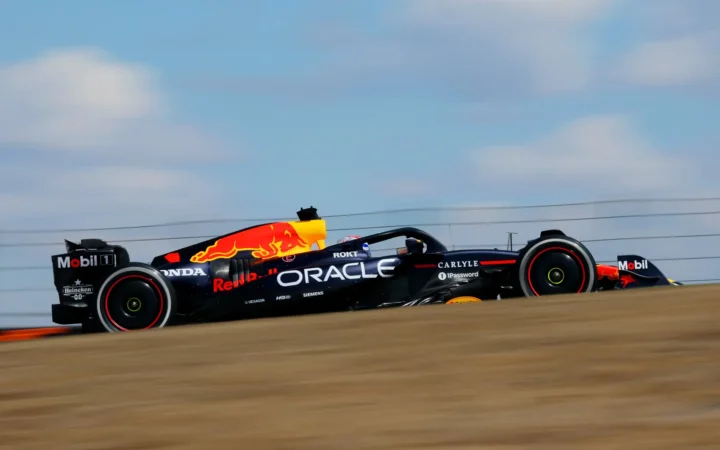What happened on this day, September 5 in Formula 1 history? Find out interesting facts and stories about Formula 1 on this day.
1939
Clay Regazzoni was born on this day, 5 September 1939. He was raised in Ticino, the Italian-speaking region of Switzerland, near the Italian border. Although Italians often regarded him as one of their own—a sentiment that brought him pride during his years with Ferrari—he was officially Swiss, holding a Swiss passport, and recognised as such in Formula One records.
His debut season in Formula One was marked by victory at the 1970 Italian Grand Prix in Monza, helping him to finish third in the championship despite participating in only eight of the thirteen races. His success at Monza solidified his role as a regular teammate to Jacky Ickx for the subsequent seasons.
His Formula One career ended tragically in 1980 during the Long Beach Grand Prix, where a brake failure led to a crash that paralyzed him from the waist down. Despite his disability, Regazzoni continued to be involved in motorsports, participating in the Paris-Dakar Rally and sports car events with specially adapted cars. He also actively promoted equal opportunities for disabled individuals, though his application for an FIA international license was declined in 1996.
His career ended with 5 wins, 28 podiums, 5 poles and 15 fastest laps driving for Ferrari, BRM, Ensign, Shadow, and Williams.
1954
Mercedes driver Juan Manuel Fangio won at the 1954 Italian Grand Prix, finishing ahead of the Ferrari trio of Mike Hawthorn, Umberto Maglioli, and Jose Froilan Gonzalez. Early race leaders Karl Kling and Alberto Ascari were forced to retire, paving the way for Stirling Moss to chase the win in his Maserati. However, Moss’s hopes were dashed by a required oil change and subsequent engine failure, allowing Hawthorn to finish second behind Fangio. Umberto Maglioli and Froilan Gonzalez took joint third.
1954 Italian Grand Prix Race Results
| Pos | No | Driver | Car | Laps | Time/retired | Pts |
|---|---|---|---|---|---|---|
| 1 | 16 | Juan Manuel Fangio | Mercedes-Benz | 80 | 2:47:47.900 | 8 |
| 2 | 40 | Mike Hawthorn | Ferrari | 79 | +1 lap | 6 |
| 3 | 38 | Umberto Maglioli | Ferrari | SHC | 2 | |
| 3 | 38 | Jose Froilan Gonzalez | Ferrari | 78 | +2 laps | 3 |
| 4 | 12 | Hans Herrmann | Mercedes-Benz | 77 | +3 laps | 3 |
| 5 | 30 | Maurice Trintignant | Ferrari | 75 | +5 laps | 2 |
| 6 | 42 | Fred Wacker | Gordini | 75 | +5 laps | 0 |
| 7 | 10 | Peter Collins | Vanwall | 75 | +5 laps | 0 |
| 8 | 26 | Louis Rosier | Maserati | 74 | +6 laps | 0 |
| 9 | 18 | Sergio Mantovani | Maserati | 74 | +6 laps | 0 |
| 10 | 28 | Stirling Moss | Maserati | 71 | +9 laps | 0 |
| 11 | 8 | Jorge Daponte | Maserati | 70 | +10 laps | 0 |
| NC | 34 | Alberto Ascari | Ferrari | 48 | DNF | 0 |
| NC | 22 | Luigi Villoresi | Maserati | 42 | DNF | 0 |
| NC | 14 | Karl Kling | Mercedes-Benz | 36 | DNF | 0 |
| NC | 24 | Roberto Mieres | Maserati | 34 | DNF | 0 |
| NC | 20 | Luigi Musso | Maserati | 33 | DNF | 0 |
| NC | 6 | Robert Manzon | Ferrari | 16 | DNF | 0 |
| NC | 32 | Jose Froilan Gonzalez | Ferrari | 16 | DNF | 0 |
| NC | 46 | Clemar Bucci | Gordini | 13 | DNF | 0 |
| NC | 44 | Jean Behra | Gordini | 2 | DNF | 0 |
1970
Austria’s Jochen Rindt became the only posthumous Formula 1 World Champion after a fatal crash in his Lotus during practice at Monza, at the approach to the infamous Parabolica corner. Rindt was running a wingless setup to increase straight-line speed when he veered left into a barrier, causing his car to hit a stanchion head-on. Tragically, Rindt’s simple lap belt, caused him to slide underneath and suffer fatal injuries as the belt buckle sliced his throat. His death marked the third fatality of the 1970 season, following the losses of Bruce McLaren and Piers Courage in earlier accidents. Later investigations determined that the accident was triggered by a failure of the car’s right front inboard brake shaft. However, they concluded that Rindt’s death resulted from improperly installed crash barriers. Colin Chapman disputed the claim that the broken brake shaft caused the accident, insisting that the shaft only broke upon the wheel’s impact with the barrier.
His good friend and business manager Bernie Ecclestone was one of the first on the scene, leaving with only two sad souvenirs: a battered helmet and a single shoe thrown some distance from the wreckage.
The fatal accident occurred near the spot where his boyhood hero Wolfgang von Trips had been killed in 1961. At that time, von Trips was leading the championship, just as Rindt was at the time. But while von Trips was beaten to the title by his Ferrari teammate Phil Hill, Rindt, even after his death, remained the uncontested 1970 Drivers’ World Champion—a title he undeniably deserved.
1971
A year after Jochen Rindt’s tragic accident, Lotus withdrew from the 1971 Italian Grand Prix due to ongoing legal disputes with Italian authorities related to the incident. Clay Regazzoni made a remarkable start from the fourth row to take an early lead in the race, which saw several lead changes over the opening laps. Ultimately, the race featured a thrilling five-car battle for the lead involving Peter Gethin, Ronnie Peterson, Francois Cevert, Mike Hailwood, and Howden Ganley, with Gethin emerging victorious for the BRM team. Peterson finished second for March and Cevert third with Tyrrell. In doing so it was enough for the Tyrrell team to win their first Constructors’ Championship with two races remaining.
The race also saw an average speed of 242.615 km/h (150.754 mph), this race held the record as the fastest Formula One race for 32 years until it was surpassed at the 2003 Italian Grand Prix at Monza.
1971 Italian Grand Prix Race Results
| Pos | No | Driver | Car | Laps | Time/retired | Pts |
|---|---|---|---|---|---|---|
| 1 | 18 | Peter Gethin | BRM | 55 | 1:18:12.600 | 9 |
| 2 | 25 | Ronnie Peterson | March Ford | 55 | +0.010s | 6 |
| 3 | 2 | Francois Cevert | Tyrrell Ford | 55 | +0.090s | 4 |
| 4 | 9 | Mike Hailwood | Surtees Ford | 55 | +0.180s | 3 |
| 5 | 19 | Howden Ganley | BRM | 55 | +0.610s | 2 |
| 6 | 12 | Chris Amon | Matra | 55 | +32.360s | 1 |
| 7 | 14 | Jackie Oliver | McLaren Ford | 55 | +84.830s | 0 |
| 8 | 5 | Emerson Fittipaldi | Lotus Ford | 54 | +1 lap | 0 |
| 9 | 20 | Jo Siffert | BRM | 53 | +2 laps | 0 |
| 10 | 28 | Jo Bonnier | McLaren Ford | 51 | +4 laps | 0 |
| NC | 10 | Graham Hill | Brabham Ford | 47 | DNF | 0 |
| NC | 26 | Jean-Pierre Jarier | March Ford | 47 | +8 laps | 0 |
| NC | 24 | Mike Beuttler | March Ford | 41 | DNF | 0 |
| NC | 16 | Henri Pescarolo | March Ford | 40 | DNF | 0 |
| NC | 23 | Andrea de Adamich | March Alfa Romeo | 33 | DNF | 0 |
| NC | 4 | Clay Regazzoni | Ferrari | 17 | DNF | 0 |
| NC | 3 | Jacky Ickx | Ferrari | 15 | DNF | 0 |
| NC | 30 | Jackie Stewart | Tyrrell Ford | 15 | DNF | 0 |
| NC | 22 | Nanni Galli | March Ford | 11 | DNF | 0 |
| NC | 27 | Silvio Moser | Bellasi Ford | 5 | DNF | 0 |
| NC | 11 | Tim Schenken | Brabham Ford | 5 | DNF | 0 |
| NC | 21 | Helmut Marko | BRM | 3 | DNF | 0 |
| NC | 8 | Rolf Stommelen | Surtees Ford | DNS | 0 |
1976
During a break in his successful Formula 1 title campaign, James Hunt competed in the Formula Atlantic series race at Trois-Rivières, Canada, a highlight event that drew numerous F1 drivers. Despite the strong field, championship leader Gilles Villeneuve dominated the race. Impressed by Villeneuve’s performance, Hunt recommended him to the McLaren team upon returning to the UK. Villeneuve went on to compete in a few races for McLaren in 1977 before being signed by Ferrari.
2021
Red Bull Racing driver Max Verstappen won the 2021 Dutch Grand Prix, marking the first Zandvoort race since 1985, and making him the first Dutch driver to win his home race. Lewis Hamilton finished in second place for Mercedes, followed by his teammate Valtteri Bottas in third. Initially scheduled for 2020, the event was postponed due to the COVID-19 pandemic. Verstappen went on to win again in 2022 and 2023 before Lando Norris won the 2024 Dutch Grand Prix on 25 August.
2021 Dutch Grand Prix Race Results
| Pos | No | Driver | Car | Laps | Time/retired | Pts |
|---|---|---|---|---|---|---|
| 1 | 33 | Max Verstappen | Red Bull Racing Honda | 72 | 1:30:05.395 | 25 |
| 2 | 44 | Lewis Hamilton | Mercedes | 72 | +20.932s | 19 |
| 3 | 77 | Valtteri Bottas | Mercedes | 72 | +56.460s | 15 |
| 4 | 10 | Pierre Gasly | AlphaTauri Honda | 71 | +1 lap | 12 |
| 5 | 16 | Charles Leclerc | Ferrari | 71 | +1 lap | 10 |
| 6 | 14 | Fernando Alonso | Alpine Renault | 71 | +1 lap | 8 |
| 7 | 55 | Carlos Sainz | Ferrari | 71 | +1 lap | 6 |
| 8 | 11 | Sergio Perez | Red Bull Racing Honda | 71 | +1 lap | 4 |
| 9 | 31 | Esteban Ocon | Alpine Renault | 71 | +1 lap | 2 |
| 10 | 4 | Lando Norris | McLaren Mercedes | 71 | +1 lap | 1 |
| 11 | 3 | Daniel Ricciardo | McLaren Mercedes | 71 | +1 lap | 0 |
| 12 | 18 | Lance Stroll | Aston Martin Mercedes | 70 | +2 laps | 0 |
| 13 | 5 | Sebastian Vettel | Aston Martin Mercedes | 70 | +2 laps | 0 |
| 14 | 99 | Antonio Giovinazzi | Alfa Romeo Racing Ferrari | 70 | +2 laps | 0 |
| 15 | 88 | Robert Kubica | Alfa Romeo Racing Ferrari | 70 | +2 laps | 0 |
| 16 | 6 | Nicholas Latifi | Williams Mercedes | 70 | +2 laps | 0 |
| 17 | 63 | George Russell | Williams Mercedes | 69 | DNF | 0 |
| 18 | 47 | Mick Schumacher | Haas Ferrari | 69 | +3 laps | 0 |
| NC | 22 | Yuki Tsunoda | AlphaTauri Honda | 48 | DNF | 0 |
| NC | 9 | Nikita Mazepin | Haas Ferrari | 41 | DNF | 0 |
| Note – Hamilton scored an additional point for setting the fastest lap of the race. | ||||||
F1 Driver Birthdays 5 September
| Birthday | F1 Driver |
|---|---|
| 5 September 1939 | Clay Regazzoni (d. 2006) |
| 5 September 1963 | Taki Inoue |
| 5 September 1965 | David Brabham |
F1 Driver Deaths 5 September
| Death | F1 Driver |
|---|---|
| 5 September 1970 | Jochen Rindt (b. 1942) |
F1 Champion 5 September
| Date | Team/Driver |
|---|---|
| 5 September 1971 | Tyrrell |
Seen in:

